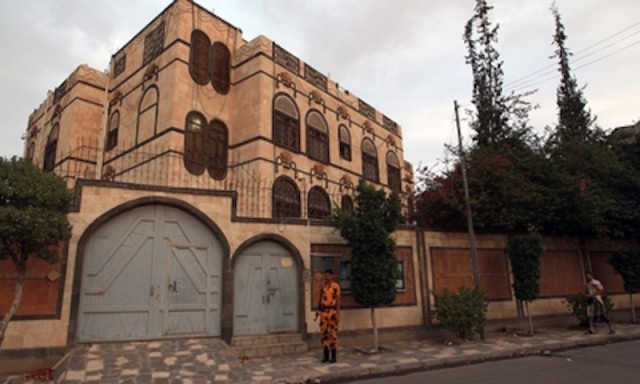Iranian officials accused Saudi Arabia of launching an airstrike against its embassy in Sanaa, Yemen, on Thursday, marking the latest escalation between the two regional powers.
Saudi Arabia’s alleged attack on the diplomatic facility was “deliberate and intentional,” said an Iranian Foreign Ministry spokesman quoted in the Islamic Republic’s state-run media. “Iran holds the government of Saudi Arabia responsible for this act and the wounding of a number of embassy staff and damages made to its building,” he said.
While not all of Tehran’s accusations have been independently verified, accounts from Sanaa suggest that a building across the street from the diplomatic compound was indeed hit in an air strike. The New York Times reported that shrapnel from the attack injured embassy guards in the vicinity. Saudi Arabia has led a destructive air campaign since March to push back Iranian-supported Houthi rebels in Yemen, often coming under criticism for bombing built-up urban areas.
Wednesday night’s events are only the most recent signs of tension between the Sunni Kingdom and Tehran’s Shiite theocracy. Riyad’s execution of aleading Shiite cleric, Nimr al-Nimr, who authorities had accused of fomenting terrorism, sparked outrage in Iran. Rioters gathered outside the Saudi Embassy in Tehran, throwing firebombs and ultimately ransacking the building. Following the incident, Saudi leaders cut diplomatic ties with the Islamic Republic, expelling all Iranian diplomats from the country. Other Sunni nations followed, Qatar announced it would recall its ambassador from Iran, and Bahrain, Sudan, and Djibouti severed diplomatic ties.
The rivalry between Iran and Saudi Arabia, and more widely between Sunnis and Shiites, for regional dominance dates back centuries, and can be seen in various trouble spots throughout the Middle East. But, Washington’s recent willingness to lift sanctions on Iran as part of a wider nuclear agreement alarmed Sunni leaders who no longer feel secured by America’s presence in the region. Ultimately, this week’s flare-up highlights the uncertainty by the changing of an important 40-year-old American strategy: containing Iran.


